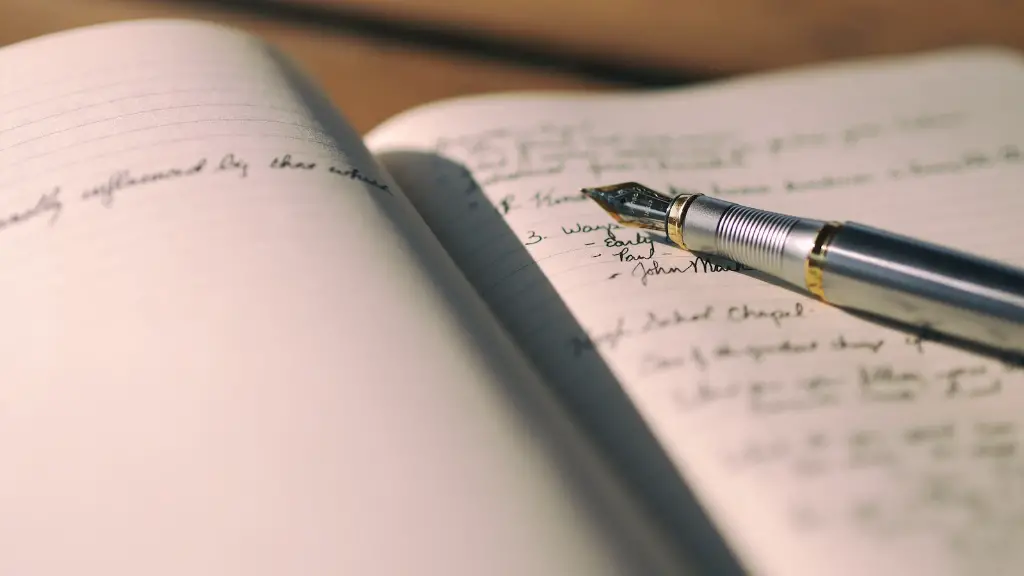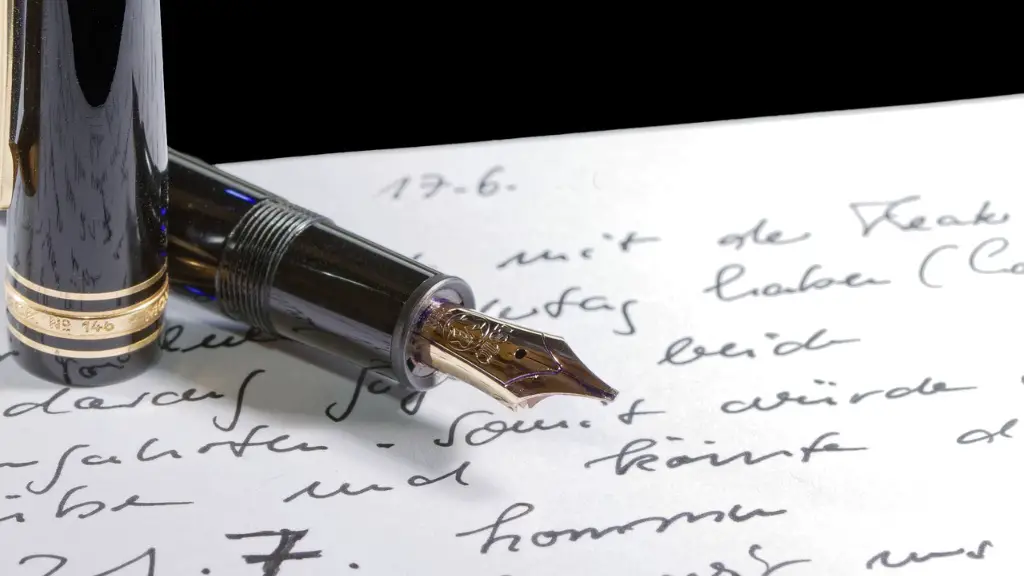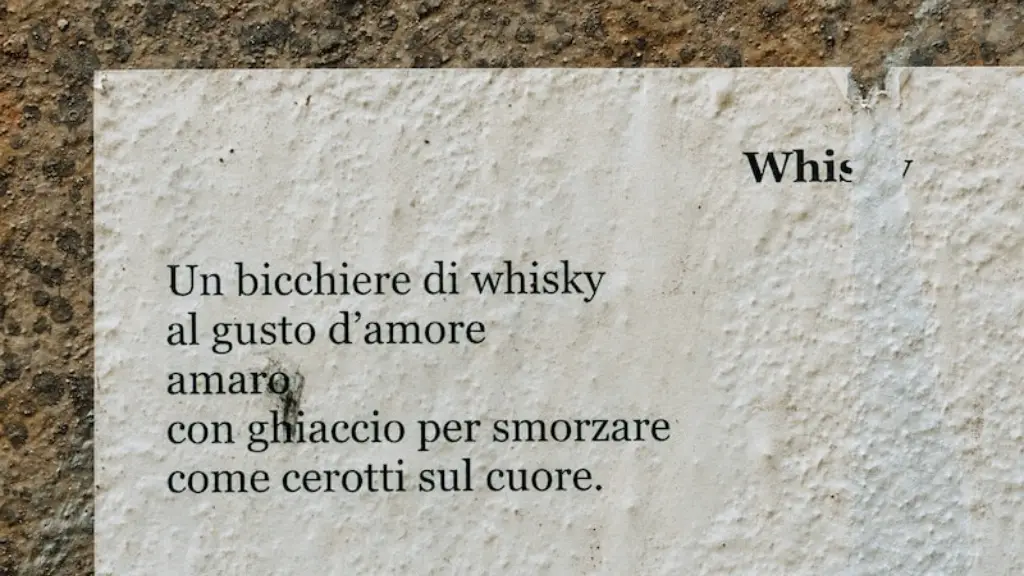The renowned Robert Frost crafted beautiful and thought-provoking poems during his lifetime. Many readers have admired his works and aspired to emulate his style. Crafting a poem in Frost’s style is a challenging but rewarding pursuit. It is possible to write a Frost-like poem if you know how.
Firstly, you need to be familiar with Frost’s themes. He focused upon nature and rural life, alongside his own personal reflections on complex matters such as morality and mortality. Make sure you pick a topic that you feel comfortable and familiar with, in order to bring the most out of your poem.
Secondly, Frost tended to keep his structures simple and pithy. He often wrote in common metrical forms such as iambic tetrameter and iambic pentameter. This is a great way to create a verse to your liking that still feels familiar to a reading audience. It also allows you to control your pacing and narration through the poem.
Thirdly, you should pay attention to the dialogue and phrasing. Like many of the Romantics, Frost often employed the device of personification to bring life to his words and imagery. Additionally, don’t be afraid to be blunt and to the point when crafting your pieces. The more straightforward you are, the better the emotion will be captured.
Fourthly, remember that a poem isn’t just about the words. The spaces, lines and breaks between each verse can say a lot. They can be used to signify the passing of time and to draw attention to a specific point, which could be a form of alliteration or characterisation. Take time in the exploration of these aspects to make your poem truly shine.
Imagery and Symbolism
Frost was a master of using imagery and symbolism in his poetry. He often opted to compare immortal themes such as love, death and hope to something physical or tangible. This kind of comparison proves to be an effective way of expressing a powerful message in a poetic manner. You could include symbols such as roads, trees or rivers in order to create a vivid picture in the reader’s mind.
It is also important to remember that symbolism doesn’t have to be literal. If a line is significant to your poem, it can be used symbolically. For example, a stream might represent movement and flow, or a lighthouse could symbolise guidance in a journey. Be creative with your symbolism, but don’t forget to explain what each element represents in your descriptions.
Similarly, Frost often used his imagery to create double meanings and ambiguities. He was particularly fond of the phrase ‘and miles to go before I sleep’, and could use the same verse to enthral the reader with multiple meanings. To recreate this effect in your poem, take some time to research and brainstorm potential images and hidden meanings.
Finally, the right choice of words is important in creating a poetic atmosphere. Frost particularly enjoyed using challenging, archaic words that had a powerful impact upon the reader. Try to use a wide range of diction, but don’t be afraid to shy away from the expected. Sometimes, the surprising combination of words can be the most effective.
Authenticity and Emotion
It is also essential to be authentic with your feelings when crafting your poem. Frost was forthright in his stabs at emotion, and his deep exploration of human fragility was a beacon of poetry. Don’t be afraid to open up and show your true self in your poem, no matter how uncomfortable it may be. An honest and authentic poem will resonate more deeply with your readers.
In addition to authenticity, try to use language which captures your emotion as effectively as possible. This will depend upon the topic that you have chosen, but also be mindful of the linguistic devices available. Alliteration, onomatopoeia and personification can be powerful tools in a poet’s toolkit, and using them in your work can add an extra spark of life to your verses.
The tone can also play an important role. Frost’s poems typically adopt a soft and tranquil voice, but don’t be afraid to raise the pace or mood if it suits the message. Try to take inspiration from different genres, such as folk or country music, and combine them with your chosen image to make an unforgettable tone.
Ultimately, the best way to capture emotion is to prioritise intensity over quantity. Keep your poem concise and punchy, but be sure to make every word meaningful. This is possibly the greatest challenge of writing a typical Frost poem, but if achieved, it can be a powerful force of engagement and emotion.
Composition and Execution
Now comes the composition of the poem itself. To start, decide the best way to open the poem. This can vary, but Frost often began with an image or setting in order to kick start the feelings associated with his chosen symbol or theme. Open with a vivid sentence or phrase which encapsulates the main emotion or feeling that you are trying to express.
Once you have that introduction, you can start to focus on the body of the poem. Just as with its opening, the body should be succinct and to-the-point. Include only the essential words and make sure each lines’ emotion compliments each other, as if each line is driving the emotions of the poem to its full fruition.
Then, you should think about your conclusion. Frost often drew his readings to a happy ending or a meditative state. The key is to ensure your writing is still true to the emotion of the poem, but has steered itself to a meaningful conclusion. It should leave the reader feeling fulfilled and contentment with the message.
It’s also worth spending time on your rhymes and alliterations. Frost often employed subtle but powerful rhymes, as it helped him drive home his point with a pleasant-sounding cadence. This could work in a rousing or haunting melodic pattern combined with your word choices. You don’t need to be clever with your rhymes, but they can be instrumental in keeping the reader engaged.
Editing and Finishing
The next step is the editing process. Once a draft of your poem is completed, assess it critically. Does the emotion read true? Does the form stay consistent throughout? Does it flow from one verse to the next? Re-writing and editing your poem can help you to tweak and refine these finer points until your poem is as powerful and precise as you wish.
It is then important to step back and assess the poem from a reader’s point of view. Are the lines clear, precise and significant? Does it communicate successfully? What is it about the piece which could be enhanced? The more objective and open you can be with assessing your own work, the more improvements you can make.
Finally, don’t be afraid to ask for feedback from trusted sources. It takes vulnerability to share your work, but feedback is an important way of seeing your poem in a different light. Receiving outside opinions is key in making sure that your poem will resonate with its reader and keep Frost’s style of poetry alive.
Conclusion
Writing a Frost-like poem can be a difficult task, but is achievable if you stick to the fundamentals. Familiarise yourself with Frost’s themes and language, and focus on creating powerful imagery and symbolism. Make sure the emotion of your poem is genuine and true, then craft each line tightly and with purpose. Finally, edit and assess the poem with a critical eye and take on board constructive feedback. Follow these steps and you will soon be crafting poems worthy of the great Robert Frost.




